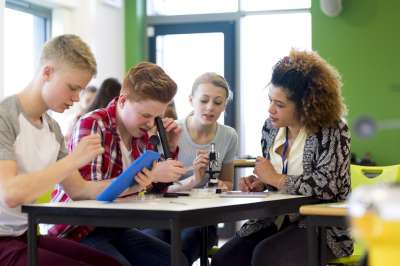Teaching with Cooperative Learning
The effective use of cooperative learning in the classroom is often built upon a four-step process. Consider the following four elements as you begin to design and implement cooperative learning into your teaching routines:
Presentation of content. In Lesson Methodologies, I talked about the ways in which you can present information to your students. These instructional activities must be done prior to any cooperative learning activity. Cooperative learning is not a self-instruction model, but rather a way for students to “mess around” with previously presented material. In short, cooperative learning comes after you've taught something to your students.
Teamwork. This is the time—after you've taught the new material—when students are engaged in a cooperative learning activity. The cooperative learning strategy (Jigsaw, STAD, Think-pair-share, Numbered heads) is selected and explained to the entire class. Students are divided into various teams and provided sufficient time to complete their assigned duties.
Individual assessment. In cooperative learning, the objective is not the production of a single set of correct answers for the entire group but rather the development and enhancement of each member's achievement. Although members of the team work together to master information, each individual member must be assessed in relation to her or his mastery of the content. In short, everybody is tested in line with her or his achievement potential.
Team recognition. It's most appropriate to recognize and celebrate the efforts of the team as a whole. It's equally important to celebrate the efforts of the team to assist individual members in learning a specific body of knowledge. These ceremonies can be either public or private. Teachers have rewarded teams with an extra recess, a “homework pass,” a snack, a certificate or award, or some other appropriate reward. In many cases, the reward can be as simple as a classroom cheer or extended series of high fives.
















